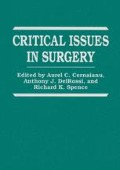Abstract
Hypomagnesemia has been described as one of the most common electrolyte abnormalities of hospitalized patients as well as the most under diagnosed electrolyte deficiency in current medical practice. 1,2 Low serum magnesium concentration has been shown to be a common finding in medical, postoperative, and pediatric ICU patients, and to be associated with higher mortality and poorer outcome in these patients. Rubiez et al have shown a 63% incidence of hypomagnesemia detected on admission of 400 acutely ill medical patients being associated with increased mortality.3 Chernow et al reported hypomagnesemia in 61% of 193 postoperative ICU patients, having a higher mortality than similarly ill normo-magnesemic patients, with severe hypomagnesemia (<1 mEq/L) being clinically important.4 Ryzen et al studied 94 medical ICU admissions, finding a 65% incidence of magnesium deficiency in patients with normal creatinine.5 Broner et al demonstrated a significantly poorer outcome, as measured by either survival or ICU length of stay, in 98 critically ill pediatric patients with either hypermagnesemia (43.3%) or hypocalcemia (17%).6
Access this chapter
Tax calculation will be finalised at checkout
Purchases are for personal use only
Preview
Unable to display preview. Download preview PDF.
References
Whang R. Magnesium deficiency: Pathogenesis, prevalence and clinical implications. Am J Med 1987;82(S3A):24–29.
Wacker WEC. Measurement of magnesium in human tissues and fluids: A historical perspective. Magnesium 1987;6:61–64.
Rubeiz GJ, Thill-Baharozian M, Hardie D, et al. Association of hypomagnesemia and mortality in acutely ill medical patients. Crit Care Med 1993;21:203–209.
Chernow B, Bamberger S, Stoiko M, et al. Clinical hypomagnesemia in patients in post-operative intensive care. Chest 1989;95:391–397.
Ryzen E, Wagers PW, Singer FR, et al. Magnesium deficiency in a medical ICU population. Crit Care Med 1985;13:19–21.
Broner CW, Sri Dham Gl, Westenkirchner DF, et al. Hypermagnesemia and hypocalcemia as predictors of high mortality in critical ill pediatric patients. Crit Care Med 1990;18:921–928.
Moore EE, Mattox KL, Feliciano DV. Patterns of injury. In: Wounds and Injuries. Moore E, Mattox KL, Feliciano DV (eds) Appleton & Lange, Norwalk, Conn., 1991, pp 81–93.
Salem M, Munoz R, Chernow B. Hypomagnesemia in critical illness, a common and clinically important problem. Critical Care Clinics 1991;7:225–252.
Chernow B, Smith J, Rainey T, et al. Hypomagnesemia: implications for the critical care specialist. Crit Care Med 1982;10:193–196.
Altura BT, Shirey TL, Young CC. A new method for the rapid determination of ionized magnesium in whole blood, serum and plasma. Meth Find Exp Clin Pharmacol 1992;14(4):297–304.
Murphy E. Measurement of intracellular ionized magnesium. Miner Electrolyte Metab 1993;19:250–258.
Alvarez-Leefmans FJ, Giraldez F, Gamino SM: Intracellular free magnesium in excitable cells: Its measurement and its biologic significance. Can J Phisiol Pharmacol 1987;65:915–925.
Schwartz GR. Endocrine and metabolic emergencies. In: Principles and practice of emergency medicine. Schwartz GR, Clayten CG, et al. (eds), Lea & Febiger, Philadelphia, Pa., 1992, pp 2076–2079.
Olerich M, Rude R. Should we supplement magnesium in critically ill patients? New Horizons 1994;2:186–192.
Author information
Authors and Affiliations
Editor information
Editors and Affiliations
Rights and permissions
Copyright information
© 1995 Springer Science+Business Media New York
About this chapter
Cite this chapter
Wry, P.C., Mure, A.J., Ross, S.E. (1995). Hypomagnesemia as a Predictor of Mortality in Critically Ill Trauma Patients. In: Cernaianu, A.C., DelRossi, A.J., Spence, R.K. (eds) Critical Issues in Surgery. Springer, Boston, MA. https://doi.org/10.1007/978-1-4615-1851-8_17
Download citation
DOI: https://doi.org/10.1007/978-1-4615-1851-8_17
Publisher Name: Springer, Boston, MA
Print ISBN: 978-1-4613-5751-3
Online ISBN: 978-1-4615-1851-8
eBook Packages: Springer Book Archive

